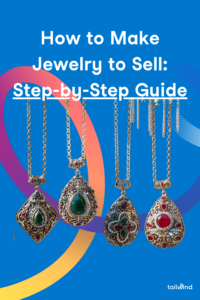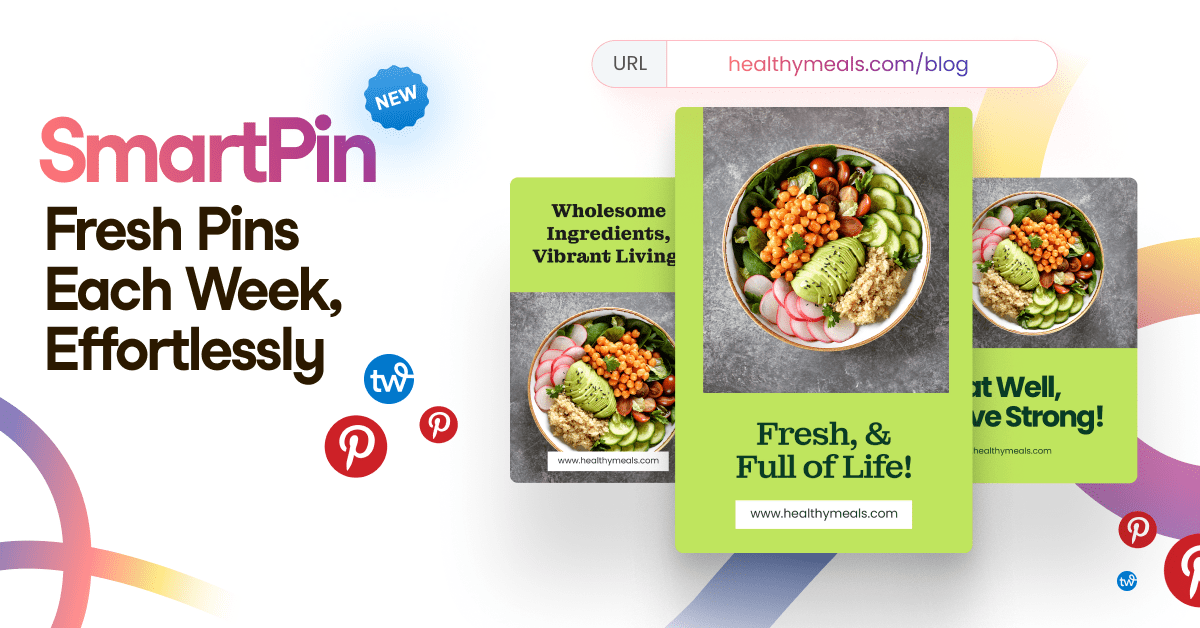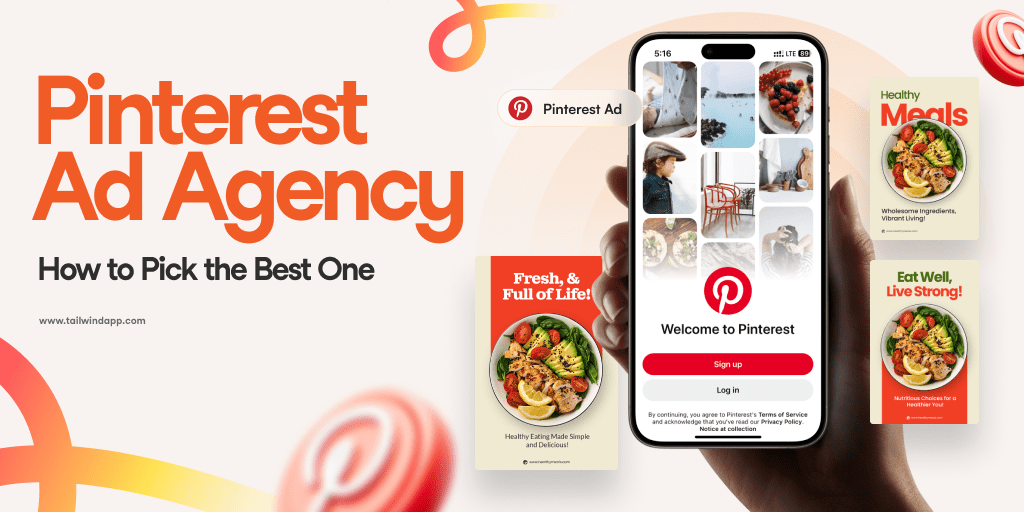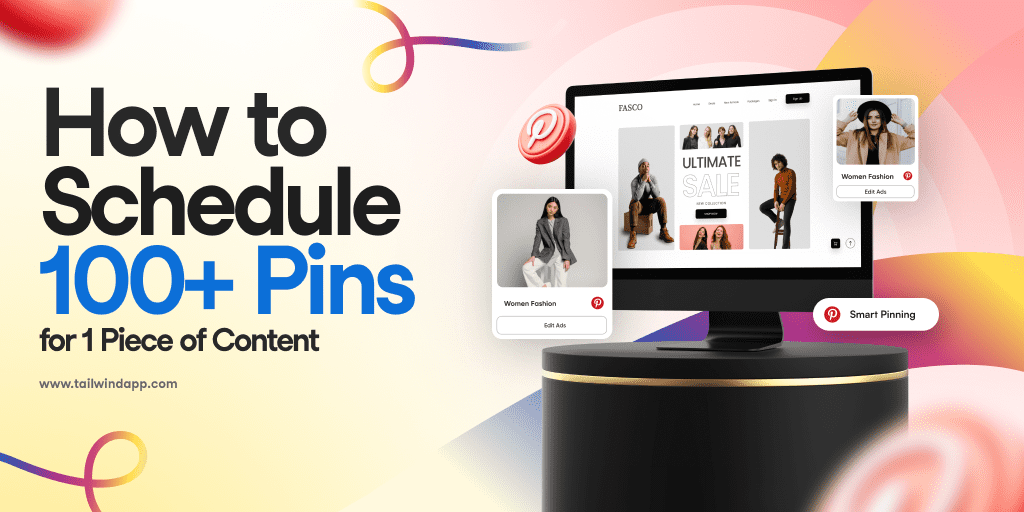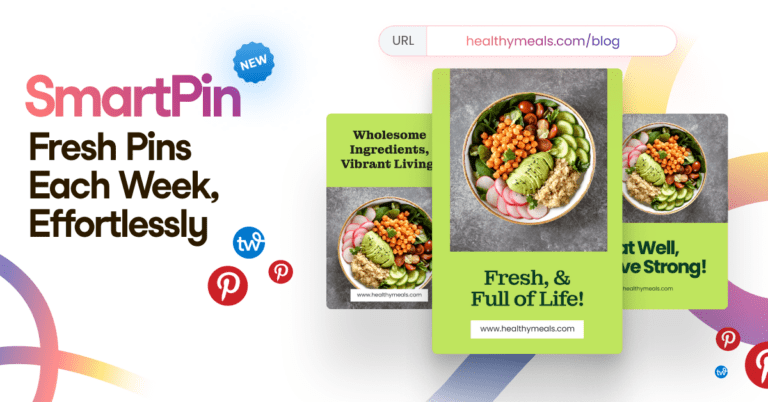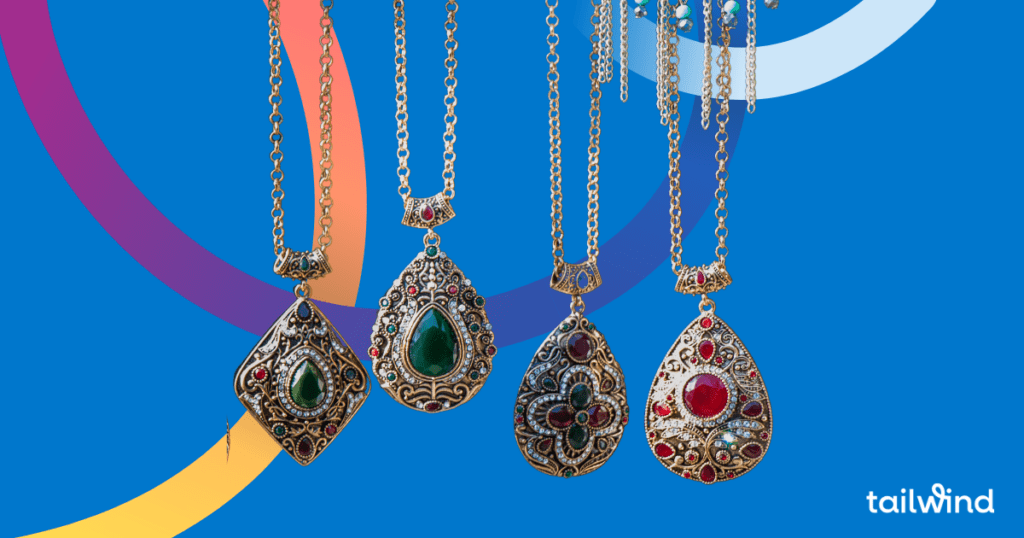
Jewelry is a competitive market, and even more so when it comes to online sales. If you did your homework, you already know that the choices for jewelry sellers are endless.
There are two main factors that can make or break an online jewelry store: brand story and the product itself.
These two are also frequently intertwined, as one works only if the other one does. If you do not plan on outsourcing or dropshipping but want to make unique pieces of your own – continue reading!
Let’s dig in.
Choosing the Right Materials for Your Jewelry
Selecting appropriate materials is vital for creating jewelry that’s not only beautiful but also durable and appealing to buyers.
Sourcing High-Quality Materials
Metals: For metals, options include sterling silver, gold, and stainless steel. Sterling silver is popular for its affordability and elegance. Gold, while more expensive, offers a classic appeal and high resistance to tarnish. Stainless steel is a robust alternative that’s excellent for more industrial designs.
Gems and Crystals: High-quality gems like diamonds, emeralds, and rubies add a luxurious touch to jewelry, but they come at a higher cost. Crystals offer a more affordable yet still eye-catching option, with varieties like Swarovski being highly regarded.
Beads: When choosing beads, consider both glass and plastic beads for different markets. Glass beads provide a high-quality sheen, whereas plastic beads offer a wide variety of colors and are more cost-effective.
| Material Type | Examples | Characteristics |
| Metal | Sterling Silver | Affordable, Elegant |
| Gold | Classic, Tarnish-Resistant | |
| Stainless Steel | Robust, Industrial | |
| Gems | Diamonds | Luxurious, Expensive |
| Crystals | Affordable, Eye-catching | |
| Beads | Glass | High-Quality Sheen |
| Plastic | Colorful, Affordable |
Cord, Wire, and Chain: Quality cord materials include silk and nylon, which are strong and come in many colors. Choose wire thickness based on the weight of the beads and intended design style. Chains should be selected based on durability and desired metal type.
Leather: For a more rustic or bohemian style, leather is a great material to incorporate. Ensure it’s high-quality to prevent wear and potential breakage.
Cost-Effective Options for Beginners
Beads: For those starting out, acrylic beads are a budget-friendly choice. They can mimic the appearance of higher-end beads but at a fraction of the cost.
Cord and Wire: Elastic cord is ideal for beginners due to its ease of use and versatility. Copper wire is an economical alternative to silver or gold, suitable for practice and perfecting wire-wrapping techniques.
Metal: Aluminum offers a lightweight and cost-effective option for metal components. It’s also hypoallergenic, making it suitable for a wider audience.
Jewelry-Making Supplies: Bulk purchasing of findings like clasps, jump rings, and earring hooks can significantly reduce costs. Always balance quality with price to ensure your jewelry stands up to wear and retains customer satisfaction.
| Budget Material | Pros | Suitable For |
| Acrylic Beads | Low Cost, Variable Designs | Practice, Casual Pieces |
| Elastic Cord | Easy to Use, Versatile | Beginners, Stretch Bracelets |
| Copper Wire | Affordable, Good for Practice | Learning Wire-Wrapping |
| Aluminum | Lightweight, Hypoallergenic | Metal Components |
Prioritizing quality while balancing costs is key to selecting the right materials. This will ensure that your jewelry not only attracts buyers but also stands the test of time.
Essential Tools for Jewelry Making
Having the right tools is critical for making jewelry, whether you’re a beginner or a seasoned professional. They enable precision, efficiency, and a quality finish. Here’s a guide to the essential tools you’ll need:
Must-Have Tools for Beginners
Pliers: You’ll need different types of pliers for shaping and manipulating jewelry wire, such as:
- Round Nose Pliers: Essential for creating loops.
- Chain Nose Pliers: Perfect for holding pieces and opening and closing jump rings.
- Flat Nose Pliers: Useful for gripping and straightening wires.
Cutters:
- Wire Cutters: To cut jewelry wire cleanly and precisely.
- Flush Cutters: These offer a flat cut, ideal for close work on findings.
Materials:
- Jewelry Wire: A basic medium for creating various jewelry pieces.
- Clasp: Crucial for the functionality of bracelets and necklaces.
- Jump Rings: Essential for connecting components and adding length.
Storage:
- Storage Containers: Keep your materials and tools organized and easy to find.
| Tool Type | Purpose | Example of Use |
| Pliers | Shaping wire; opening/closing rings | Creating loops with round nose pliers |
| Cutters | Cutting wire; trimming edges | Snipping ends with wire cutters |
| Materials | Basic components of jewelry making | Using earring hooks to craft earrings |
| Storage | Organize tools and components | Separating jump rings into containers |
Advanced Tools for Professional Results
Enhanced Pliers: For additional precision
- Crimping Pliers: Seal beads and crimps without damaging them.
- Nylon Jaw Pliers: Straighten wire without scratching.
Advanced Materials:
- Precious Metals: Elevate your work with high-quality materials.
- Earring Hooks: Use sterling silver or gold for premium earring creations.
Storage Solutions:
- Portable Toolkits: Keep your advanced tools safe and ready for travel.
Upgrade Options:
- Replace simple clasps with magnetic or toggle clasps for a professional touch.
- Invest in quality jewelry wire in various gauges for intricate work.
It’s important to select tools that are comfortable to use and of good enough quality to give a professional finish.
As your skills advance, consider investing in specialized tools to enhance your jewelry-making even further.
Designing Jewelry That Sells
When designing jewelry to sell, it’s crucial to balance current trends with unique touches that set your pieces apart.
By staying informed and adding personal creativity, you create desirable and marketable jewelry.
Keeping Up with Jewelry Trends
To ensure your jewelry appeals to a broad audience, keep an eye on emerging trends. Industries such as fashion, entertainment, and social media are good barometers for what’s popular.
Here’s how you can stay current:
- Fashion Shows & Designer Collections: Look for recurring elements like materials, colors, and shapes.
- Celebrity & Influencer Style: Monitor what jewelry celebrities and influencers wear during public appearances or on social media.
- Trade Publications & Fashion Blogs: These often provide insight into upcoming trends.
- Pinterest Trends: Discover and analyze the latest trends. See what people are searching for!
Trend Examples:
- Classic: Pearls, gold chains, and diamond studs never go out of style.
- Goth: Dark, edgy pieces with black stones or metallic finishes.
- Bohemian (Boho): Earthy, natural elements and layered looks are key.
- Punk: Think spikes, studs, and chunky hardware.
- Bridal: Delicate, elegant pieces with a romantic touch.
Creating Unique and Personalized Pieces
Your unique touch is what will set your jewelry apart in a crowded market. Customization enables customers to feel a personal connection to your brand. Consider these strategies:
- Offer Personalization Options: Engraving initials or special dates can make an item special.
- Craft Handmade Jewelry: Highlight the artisanal quality and individuality of each piece.
- Be Inspired by Cultural or Historical Motifs: Integrate symbols or styles from various cultures to create standout pieces.
Remember, the key to successful jewelry making is to blend popular trends with original, distinctive elements, making each piece a unique find for the customer.
Mastering Different Jewelry Making Techniques
When starting to make jewelry to sell, you will need to develop a diverse set of skills that range from basic assembly techniques to more complex methods that allow for unique designs. It’s essential to practice these skills to ensure high-quality creations that appeal to potential buyers.
Basic Techniques for Beginners
In the beginning, familiarize yourself with beading and knotting. These foundational skills are crucial for making simple yet elegant designs.
- Beading: Start with stringing beads onto your choice of thread, wire, or elastic. Use a beading board to lay out your design before stringing, ensuring symmetry and pattern accuracy.
- Materials: Beads, wire, elastic, thread
- Tools: Beading needle, beading board, wire cutters
- Knotting: Learn secure knots to finish necklaces and bracelets, such as the surgeon’s knot or an adjustable sliding knot.
- Knot Types: Surgeon’s knot, sliding knot
- Common Uses: Securing clasps, creating adjustable pieces
Advanced Techniques for Unique Creations
Once you’re comfortable with the basics, advance to techniques like soldering, casting, metalworking, and wire wrapping, which will differentiate your pieces from others.
- Soldering: This involves joining two metal pieces together with a metal alloy called solder. It’s a fundamental skill for creating metal jewelry with seamless joins.
- Materials: Solder, flux, metals
- Equipment: Soldering iron, third hand, jeweler’s torch
- Casting: Pouring molten metal into a mold enables you to produce intricate shapes and designs that would be difficult to achieve through other means.
- Process Steps: Create a mold, melt metal, pour into the mold, cool, and then polish.
- Metalworking: Learning to cut, file, and texture metal gives you the ability to create custom components. Basic metalworking techniques can be used to create clasps, connectors, and decorative elements.
- Techniques: Cutting, filing, stamping, hammering
- Wire Wrapping: This technique requires skillfully manipulating wire around a stone or bead to hold it in place without the need for solder.
- Materials: Wire, stones, beads
- Tools: Pliers set, wire cutters, mandrel
Setting the Right Price for Your Jewelry
When pricing your handmade jewelry, it’s essential to consider both the tangible and intangible aspects of your products to ensure a balance between profitability and marketability.
Calculating Material and Labor Costs
Firstly, assess your direct costs, which include all materials used in the creation of each piece. Document the price of metals, gemstones, and other materials to determine the baseline cost. For an accurate measure, use the following table to list individual components and their prices:
| Material | Quantity | Cost per Unit | Total Cost |
| Silver | 2 oz | $0.50/oz | $1.00 |
| Beads | 50 | $0.10/each | $5.00 |
| Clasp | 1 | $0.75/each | $0.75 |
| Total Material Cost | $6.75 |
Next, calculate your labor costs by setting an hourly wage for yourself and tracking the time spent on creating each piece.
If a necklace takes two hours to make and your hourly wage is $15, the labor cost for the necklace is $30. (If you spend a lo of resources on design and development – keep them in mind as well!)
Understanding Market Pricing
After establishing your baseline costs, perform market research to understand the pricing strategy of your competition.
Explore the price points of similar products to yours within the market. Take note of the niche and target demographics you aim to serve and adjust your pricing accordingly. This helps assess whether your pricing should be premium or competitive.
Consider the perceived value by examining the interests and opinions of your potential customer base. Jewelry that aligns with specific lifestyles or trends might allow for higher profit margins due to increased demand. Avoid underpricing your work, as this can undermine its perceived value and dilute your brand’s worth in the eyes of consumers.
By merging a comprehensive analysis of your costs with a strategic understanding of the market, you will be able to set a fair and competitive price that not only covers your expenses but also ensures a sustainable profit margin.
Packaging and Presenting Your Jewelry
Effective packaging and presentation are crucial for making your jewelry stand out, both in physical form and when listed on online marketplaces like Etsy, Amazon, or eBay. These elements not only protect your items but also serve as an extension of your brand, reflecting the aesthetics and quality of your work.
Creative Packaging Ideas
When packaging your jewelry, consider using materials and designs that speak to the character of your brand and enhance the customer’s unboxing experience. For necklaces and bracelets, utilize jewelry boxes that align with the size and shape of the item to prevent movement and potential damage during shipping.
- Eco-Friendly Options:
- Recycled cardboard boxes
- Biodegradable bubble wrap
- Organic cotton pouches
- Enhancing Brand Presence:
- Stamped logo on outer packaging
- Branded stickers or tape
- Custom thank you notes inside the package
- Securing the Pieces:
- Use small cotton inserts or foam to keep earrings and rings in place
- Ensure clasps are closed to prevent tangling
Embellishing the package with ribbons or seals can add a personal touch that customers often appreciate and remember.
Photography Tips for Online Sales
High-quality visuals are essential when selling jewelry online. Your jewelry photographs should accurately represent the product and entice potential buyers to make a purchase.
- Consistent Lighting:
- Use soft, natural light or a lightbox to avoid harsh shadows.
- Ensure the light is even to properly reveal the shine and color of the jewelry.
- Focus on Details:
- Use a macro lens or set your camera to a macro mode for close-up shots.
- Capture the uniqueness of each piece, emphasizing textures and materials.
- Neutral Backgrounds:
- Choose backgrounds that don’t distract from the jewelry.
- Whites and light greys are often best as they allow the pieces to be the focal point.
- Styling the Shot:
- Include props that complement but don’t overpower the piece.
- For necklaces or bracelets, consider a bust display to showcase the item’s form.
Remember to always format your photographs to fit the specifications of the online platform you are using, whether it’s eBay, Amazon, or Etsy. Clear, well-presented images can greatly influence a customer’s decision to buy.
Building a Brand Around Your Jewelry
Effective branding elevates your jewelry from simply being a product to becoming a story that resonates with your customers. It’s about creating a distinctive identity and connecting with your =target audience in meaningful ways.
Developing a Signature Style
Your signature style is the visual cornerstone of your branding. This style acts as a silent ambassador for your brand, instantly recognizable and reflective of your aesthetic and values. To establish this:
- Identify Your Aesthetics: Pinpoint the designs, materials, and themes that genuinely represent your vision.
- Consistency is Key: Apply your aesthetic across all your creations to build a cohesive brand image.
- Research Your Market: Understand your target audience and tailor your style to their preferences without compromising your uniqueness.
- Stay True to Your Craft: While trends can inform your designs, ensure your style remains authentically yours.
Crafting a Compelling Brand Story
Your brand story is not just about how you started; it’s about the why behind your jewelry business. This narrative should captivate your potential customers by conveying the passion and craftsmanship that goes into each piece.
- Origin Story: Share the journey that led you to start making and selling handmade jewelry.
- Values and Vision: Boldly state the values that guide your brand and the vision you have for your customer relationships.
- Connect Emotionally: Use storytelling to forge an emotional connection, making your brand memorable and relatable.
- Utilize Multiple Platforms: Effectively share your brand story on various platforms, particularly on social media channels like Instagram, where visuals are vital.
Remember, a successful brand resonates with its audience. By combining a distinctive style with a compelling story, you can create a powerful brand presence that cuts through the noise of the online business world. Keep refining both your artistic voice and narrative to deepen the impact of your jewelry brand.
Legal Considerations and Selling Ethics
When starting your journey into selling jewelry, it’s crucial to navigate the legal landscape and uphold strong ethical standards. Both areas directly impact your brand’s reputation and operational longevity.
Understanding Business Licensing
Before commencing sales, ensure you hold the appropriate business licenses. These vary by location, business structure, and sales platform. For example, if you plan to use Shopify as your online storefront, familiarize yourself with their conditions.
Business Plan and Licensing Checklist:
- Evaluate Business Structure: Decide if you are a sole proprietor, LLC, etc.
- Check Local Requirements: Contact your local government or a legal advisor.
- Register Your Business: Obtain all necessary permits before selling.
Ethical Sourcing and Sustainability Practices
Ethical sourcing ensures your handmade or homemade jewelry doesn’t come at the expense of exploitative labor or environmental harm. Sustainability is about minimizing your ecological footprint in the creation and distribution of your jewelry.
Key Practices for Ethical Sourcing:
- Supplier Research: Only partner with suppliers who provide documentation of their ethical practices.
- Materials Traceability: Keep a transparent supply chain to confirm the sustainable origin of materials.
Sustainability Steps for Your Business:
- Eco-friendly Packaging: Utilize recyclable or biodegradable packaging.
- Energy-efficient Production: Opt for low-impact manufacturing techniques for your handmade pieces.
Remember, detailed descriptions of your ethical practices can enhance your shop’s profile and contribute to your search engine optimization (SEO) strategy by aligning with the values of your target customers.
